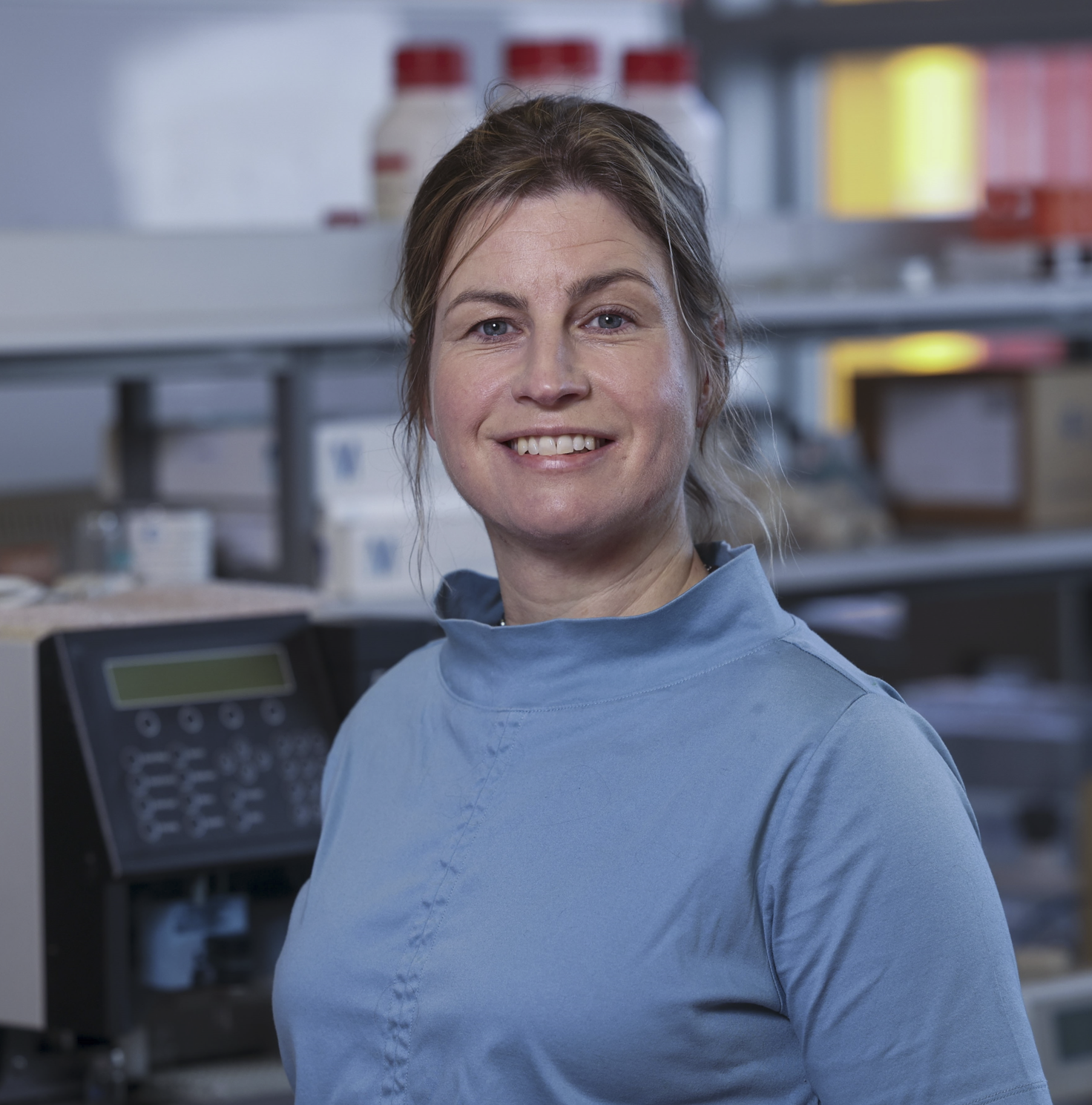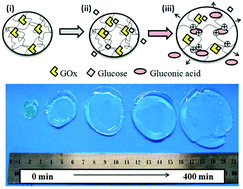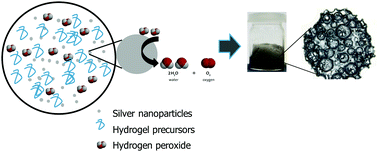Aoife Morrin
Dr.

Established in the field of electroanalytical device development for environmental and biomedical sensing applications. Background in conducting polymer materials for analytical biosensing applications extending to microfluidics and whole device system development. Expertise in broader functional materials including stimuli-responsive materials giving improved performances due to nano-structuring, chemical functionalisation and mechanical properties.Current application focus is in wearable platforms, specifically epidermal sensing. Active research in understanding the volatile emission for the skin for translating into wearable biochemical sensing platforms. Sensor development approach based on materials including electrically-responsive hydrogels for integration with skin and functionalised magnetic nanomaterials for biomarker capture from tissue.Published >60 peer-reviewed research papers, 8 review papers, 1 edited book, 3 book chapters. (h-Index: 23; citations>2500).
Conference Contribution
Book Chapter
Peer Reviewed Journal
Certain data included herein are derived from the © Web of Science (2021) of Clarivate. All rights reserved.
Research Interests
Analytical and Materials Chemistry
- Electroanalytical devices for environmental and biomedical sensing applications
- Stimuli-responsive materials characterisation and application
- Electro-responsive architectures in chromatography, sensing and drug delivery
- Epidermal sensing
Robust epidermal tattoo electrode platform for skin physiology monitoring
DOI: 10.1039/C8AY02678E (Paper) Anal. Methods, 2019, Advance Article
An epidermal tattoo sensing platform comprising silver-based electrodes for direct skin physiology monitoring is reported here. The platform uses an assembly of screen-printed elastomeric silver electrodes interfaced with a porous acrylate-based adhesive layer. The elastomeric nature of the electrodes and the inclusion of the porous adhesive layer were demonstrated to improve adhesion strength, lower stiffness and increase fracture strain of the platform. The porous adhesive layer in particular was shown to improve mechanical properties of the platform without impacting on the electrical measurement of viable tissue resistance (Rvt) by the electrodes. Rvt values as measured by the wearable tattoo platform were shown to correlate with tissue dielectric constant (TDC) measurements in a participant study. Topical treatment studies were also carried out whereby single frequency impedance responses of the electrodes was shown to relate to the absorption characteristics of the treatment into the skin. Overall, the work contributes to the area of epidermal sensing and electronics whereby approaches to achieve optimum mechanical properties as well as good electrical fidelity in an epidermal sensor platform are critical to developing wearable sensors for taking robust analytical measurements related to skin physiology.
Endogenous and microbial volatile organic compounds in cutaneous health and disease
2018 TrAC Trends in Analytical Chemistry https://doi.org/10.1016/j.trac.2018.12.012
Human skin is a region of high metabolic activity where a rich variety of biomarkers are secreted from the stratum corneum. The skin is a constant source of volatile organic compounds (VOCs) derived from skin glands and resident microbiota. Skin VOCs contain the footprints of cellular activities and thus offer unique insights into the intricate processes of cutaneous physiology. This review examines the growing body of research on skin VOC markers as they relate to skin physiology, whereby variations in skin-intrinsic and microbial metabolic processes give rise to unique volatile profiles. Emerging evidence for volatile biomarkers linked to skin perturbations and skin cancer are examined. Microbial-derived VOCs are also investigated as prospective diagnostic markers, and their potential to shape the composition of the local skin microbiota, and consequently cutaneous health, is considered. Finally, a brief outlook on emerging analytical challenges and opportunities for skin VOC-based research and diagnostics is presented.
Screen-printed Tattoo Sensor towards the Non-invasive Assessment of the Skin Barrier
2017 Electroanalysis. DOI:10.1002/elan.201600572
The development and characterisation of a screen-printed tattoo sensor for the non-invasive assessment of the skin barrier is presented. A screen-printed silver tattoo sensor comprising two concentric circle electrodes was fabricated and applied and characterised initially on a soft tissue mimic. It was shown that the tattoo was capable of tracking changes in water content in the soft tissue mimic using impedance spectroscopy. The tattoo sensors were then applied to porcine and human skins and impedance spectroscopy was used to interrogate the skin at the outer stratum corneum (SC). The SC is a layer of great interest from a dermatological point of view since it plays a critical role in the barrier function of the skin by protecting underlying tissue from infection, dehydration, chemical irritants and mechanical stress. Hydration changes were tracked in the skin using the impedance approach and validated against a tissue dielectric constant (TDC) measurement taken with the MoistureMeterD (MMD, Delfin Technologies). The impedimetric results obtained using the tattoo sensor were modelled into proposed circuit models representative of the systems measured. From this study, the potential of using wearable tattoo electrodes coupled with impedance spectroscopy as a transduction technique, to investigate skin barrier status offers considerable promise towards the monitoring and self-management of skin health.
Inducing macroporosity in hydrogels using hydrogen peroxide as a blowing agent
Abstract: A new gas blowing method to induce a macroporous structure in pH-responsive hydrogel materials with basic functional groups is reported by a new technique that generates oxygen bubbles via hydrogen peroxide decomposition to template the polymer. This overcomes pH limitations associated with the more traditional approach of using a carbon dioxide gas blowing agent. This new approach is shown to effectively induce a macroporous structure which overcomes the diffusional limitation of bulk hydrogels and, as a result, dramatically increases swelling rates. The hydrogel comprises an aliphatic diamine, Jeffamine®, cross-linked with polyethylene glycol diglycidyl ether (PEGDGE) in a single simple polymerisation step, generating a polymeric network with pendant basic groups. This cross-linking reaction requires protonation of the amine groups, which precludes it from being compatible with the carbon dioxide gas blowing method as this requires a low pH for the decomposition of carbonate. To overcome this, the production of oxygen bubbles in situ via a catalytic decomposition of hydrogen peroxide on silver nanoparticles is used to induce a macroporous structure in the hydrogel. This method was shown to successfully induce a macroporous structure whereby interconnected pores from sub-micron up to 0.5 mm diameter are created within the hydrogel. This new method of inducing macroporosity is described here in terms of the hydrogel polymerisation conditions and the nature of the porosity is characterised in terms of its ability to overcome the diffusional limitations of bulk hydrogels. Finally, rapid, reversible pulsatile pH-sensing is demonstrated using these hydrogels.
Microfluidic paper analytical device for the chromatographic separation of ascorbic acid and dopamine

RSC Adv., 2015,5, 93162-93169 DOI: 10.1039/C5RA16272F
Abstract: Cellulose-based filter papers were used as base materials to construct microfluidic paper-based analytical devices (μPADs) coupling a separation channel with electrochemical detection. Channel widths were defined by hydrophobic wax, and gold-sputtering through a mask was used to pattern an electrochemical cell at the end of the channel. The physical properties and surface chemistries of various filter papers were studied with respect to the separation of ascorbic acid (AA) and dopamine (DA). Both porosity as well as the ion-exchange capacity of the filter papers were found to influence the separation. Under the conditions used, Whatman grade P81 strong cation exchange paper based on cellulose phosphate was found to fully retain DA. Detection of both AA and DA was achieved on the other filter papers, however, different behaviours were observed. Whatman 4 could not resolve AA from DA while VWR 413 could achieve baseline separation under the conditions used. Depending on the level of oxidative treatment that they undergo, cellulose papers can have carboxyl groups present on the fibres that can act as sources of ion-exchange sites, thus making these types of papers potentially useful for ion-exchange separations. The ion-exchange capacities of the filter papers were investigated and quantified. It was shown that the ion-exchange properties of the papers evaluated varied dramatically. Furthermore, eluent ionic strength and pH were optimised to achieve a baseline resolution of AA and DA. The limit of detection of DA was 3.41 μM when analysed in the presence of 1 mM AA showing the potential of this μPAD for the detection of catecholamines in biological samples containing high concentrations of AA.
Electro-stimulated release from a reduced graphene oxide composite hydrogel

Journal of Materials of Chemistry B (2015,3, 2530-2537 DOI: 10.1039/C5TB00050E)
Abstract: Electro-stimulated release was established using a novel, electro-conductive hydrogel system comprising Jeffamine polyetheramine and polyethylene glycol diglycidyl ether (PEGDGE) that was composited with reduced graphene oxide (rGO). The swelling response, morphology, mechanical and electrochemical properties of the composite hydrogel were investigated. Enhanced mechanical and electrical properties were observed with increased rGO content. Passive and electro-stimulated release of methyl orange (MO) from these gels was examined. A significant reduction in passive release of the dye was observed by incorporating rGO. Upon electrical stimulation, the release rate and dosage could be tuned through variation of the % w/w rGO, as well as the polarity and amplitude of the applied electric potential. A high level of control and flexibility was achieved demonstrating the applicability of this system for localised drug delivery applications.
Impedimetric transduction of swelling in pH-responsive hydrogels

Analyst (2015 DOI: 10.1039/C4AN02252A)
Abstract: A pH-responsive hydrogel composed of an aliphatic diamine cross-linked with polyethylene glycol diglycidyl ether (PEGDGE) using a single, rapid polymerisation step has been used to detect glucose by entrapping glucose oxidase (GOx) within its cationic network. The swelling response of hydrogel disks on exposure to glucose were optimised through variation of factors including the cross-linking density of the network, GOx loading and the addition of catalase. Hydrogel-modified carbon cloth electrodes were also prepared and characterised using voltammetric and impedimetric techniques. Non-faradaic electrochemical impedance spectroscopy (EIS) and gravimetry were both employed to track the swelling response of the gels quantitatively. The clear potential of utilising impedance to transduce hydrogel swelling was demonstrated where a linear decrease in gel resistance (Rgel) corresponding to the swelling response was observed in the range 1 to 100 μM. A dramatic increase in the limit of detection of six orders of magnitude over the gravimetric measurement was achieved (from 0.33 mM to 0.08 μM). This increased sensitivity, coupled with the textile-based electrode substrate approach opens the potential applicability of this system for monitoring glucose concentration via the skin by sweat or interstitial fluid (ISF).

